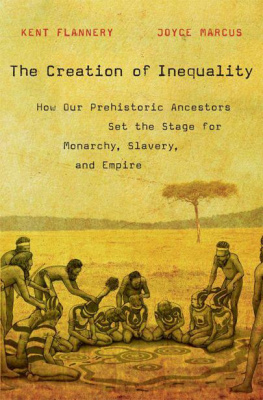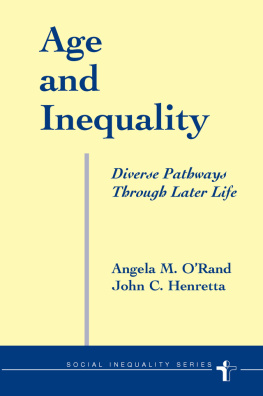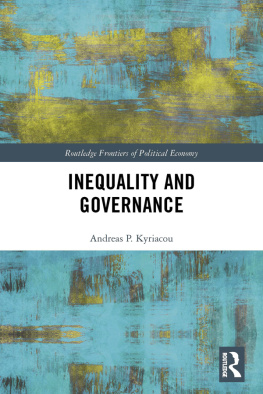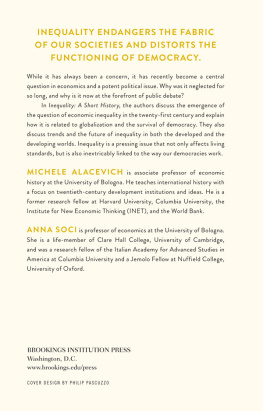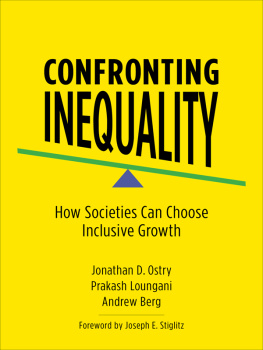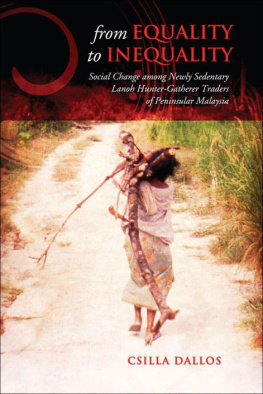THE CREATION OF INEQUALITY
THE CREATION OF INEQUALITY
HOW OUR PREHISTORIC ANCESTORS SET THE STAGE FOR MONARCHY, SLAVERY, AND EMPIRE
Kent Flannery
Joyce Marcus
HARVARD UNIVERSITY PRESS
Cambridge, Massachusetts
London, England
2012
Copyright 2012 by the President and Fellows of Harvard College
All rights reserved
Jacket images: Thinkstock and Getty Images
Jacket design: Jill Breitbarth
The Library of Congress has cataloged the printed edition as follows:
Flannery, Kent V.
The creation of inequality : how our prehistoric ancestors set the stage for monarchy, slavery, and empire / Kent Flannery and Joyce Marcus.
p. cm.
Includes bibliographical references and index.
ISBN 978-0-674-06469-0
1. Prehistoric peoples. 2. Anthropology, Prehistoric. 3. Human evolution. 4. Social evolution. 5. Equality. I. Marcus, Joyce. II. Title.
GN740.F54 2012
569.9dc23 2011039902
Man is born free, and yet we see him everywhere in chains.
J.-J. Rousseau, The Social Contract (1762)
Contents
Part I: |
ONE |
TWO |
THREE |
FOUR |
FIVE |
Part II: |
SIX |
SEVEN |
EIGHT |
NINE |
Part III: |
TEN |
ELEVEN |
TWELVE |
THIRTEEN |
FOURTEEN |
FIFTEEN |
SIXTEEN |
Part IV: |
SEVENTEEN |
EIGHTEEN |
NINETEEN |
TWENTY |
TWENTY-ONE |
TWENTY-TWO |
TWENTY-THREE |
Part V: |
TWENTY-FOUR |
In the autumn of 1753 the celebrated Academy of Dijon proposed an essay competition. The prize would go to the author who best answered the question What is the origin of inequality among men, and is it authorized by Natural Law?
An iconoclast from Geneva named Jean-Jacques Rousseau took up the challenge. His entry, A Discourse on the Origin of Inequality among Men, did not win, but 250 years later it is the only one still remembered. So influential was Rousseaus essay that many historians believe it provided the moral justification for the French Revolution. Still others consider Rousseau the founder of modern social science.
In less than 100 pages Rousseau presented a framework for the development of human society that preceded the writings of Charles Darwin and Herbert Spencer by more than a century. Rousseaus effort was all the more remarkable because he could not draw upon anthropology or sociology, two sciences that did not yet exist. Nor was he able to draw upon archaeology, since it would be another 120 years before Heinrich Schliemann created it.
To understand the origin of inequality, Rousseau argued, one had to go back to earliest timesto a state of nature in which the only differences among human beings lay in their strength, agility, and intelligence, and individuals worked only to satisfy their immediate needs. Rousseau believed that all the unpleasant characteristics of the human condition derived not from nature but from society itself as it developed. Self-respect, vital for self-preservation, was the rule at first. Unfortunately, as society grew, this attitude gave way to self-love, the desire to be superior to others and admired by them. Love of property replaced generosity. Eventually, a growing body of wealthy families imposed a social contract on the poor, a contract that institutionalized inequality by providing it with moral justification.
What makes the influence of Rousseaus work all the more impressive is to consider how few reliable facts he possessed when he wrote it. His entire description of natural man was based on the anecdotal accounts of travelers. Rousseau had heard of savages of the West Indies who were superb archers and savages of North America who were celebrated for their strength and dexterity. He had heard of the natives of Guinea, the east coast of Africa, the Malabars, Mexico, Peru, Chile, and the Magellan lands. He knew of the Khoikhoi people of the Cape of Good Hope but referred to them by the politically incorrect term Hottentots.
It would be easy to list all the details Rousseau got wrong, but that would be like criticizing Gregor Mendel for not knowing about DNA. More useful is to build upon Rousseaus essay by using two more recent sources of information. One source is the vast archive of archaeological information on ancient peoples. The other source is the archive of anthropological information on recent human groups. In a nutshell, here is what those two bodies of information tell us.
Anatomically and intellectually, modern humans were already present during the Ice Age. By 15,000 B.C. , they had driven their closest competitors to extinction and spread to every major landmass on earth. Our Ice Age ancestors typically lived in small foraging societies whose members are believed to have valued generosity, sharing, and altruism. As anthropologist Christopher Boehm points out, hunting-and-gathering people usually work actively to prevent inequality from emerging.
Not all of our ancestors, however, continued to live that way. Slowly but surely, some of them began to create larger societies with greater levels of social inequality. By 2500 B.C., virtually every form of inequality known to mankind had been created somewhere in the world, and truly egalitarian societies were gradually being relegated to places no one else wanted.
Evolutionary biologist Edward O. Wilson has compared the appearance of complex human societies to hypertrophy, the exaggerated overgrowth of structures, such as the tail of the peacock or the tusk of the elephant. The growth of complex human societies, however, did not require genetic change. It involved changes in a unique social logic that characterizes every human group. We learn the details of this logic through social anthropology, and we discover the long-term results of its changes through archaeology.
In the pages that follow we document our ancestors creation of inequality by drawing on both archaeology and social anthropology. Several widespread regularities become apparent. First, out of the hundreds of possible varieties of human societies, five or six worked so well that they emerged over and over again in different parts of the world. Second, out of the hundreds of logical premises that could be used to justify inequality, a handful worked so well that dozens of unrelated societies came up with them.
For whom did we write this book? Not for our fellow archaeologists and social anthropologists, although they contributed much of the information we use. Instead, we wrote this book for the general reader who is curious about his or her prehistoric ancestors but has neither the time nor inclination to wade through the social science literature.
Because the book is designed for the general reader, we give the dates of ancient events in two familiar and accessible forms. In the case of remote periods, for which dates can never be more than approximations, we give them in years ago. For more recent events, dated by Mesopotamian, Egyptian, Maya, or European calendars, we present our dates in the familiar B.C. or A.D. system, with which all readers of newspapers and news magazines are familiar.
In this book we refer frequently to both archaeology and social anthropology. One could liken their relationship to that of zoology and paleontology. By examining living amphibians, reptiles, and mammals, zoologists give us detailed knowledge of their anatomy and behavior. By examining the fossil record, paleontologists demonstrate to us that amphibians preceded reptiles and likely gave rise to them; that reptiles preceded mammals and likely gave rise to them; and so on.
Next page
